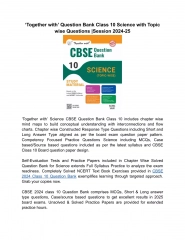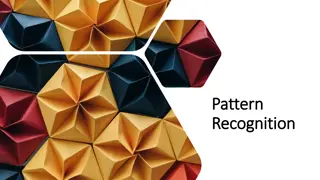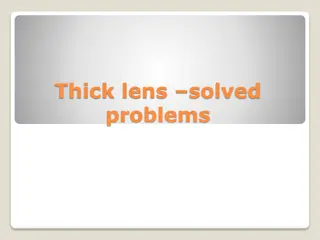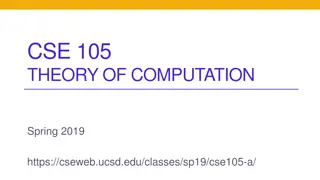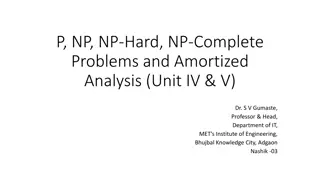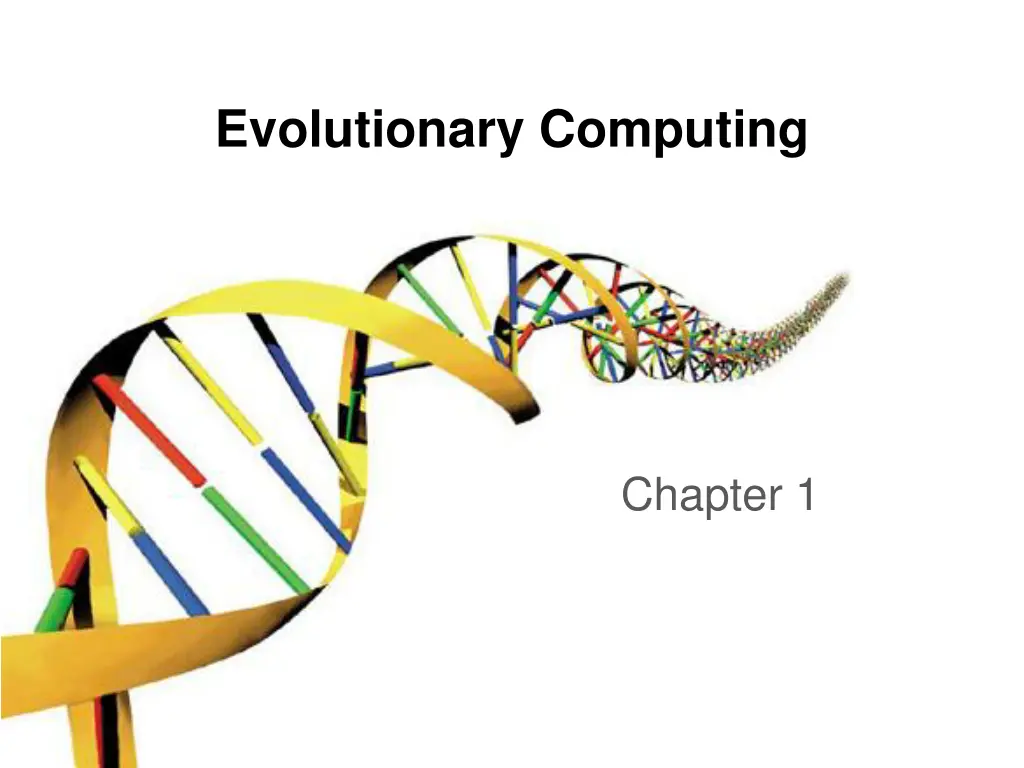
Understanding Evolutionary Computing: Chapter 1 Problems and Examples
Explore Chapter 1 of Evolutionary Computing, analyzing problem classifications like black box models and optimization challenges. Discover examples such as university timetabling and satellite structure optimization. Understand how modeling can be transformed into optimization problems for applications in machine learning and beyond.
Download Presentation

Please find below an Image/Link to download the presentation.
The content on the website is provided AS IS for your information and personal use only. It may not be sold, licensed, or shared on other websites without obtaining consent from the author. If you encounter any issues during the download, it is possible that the publisher has removed the file from their server.
You are allowed to download the files provided on this website for personal or commercial use, subject to the condition that they are used lawfully. All files are the property of their respective owners.
The content on the website is provided AS IS for your information and personal use only. It may not be sold, licensed, or shared on other websites without obtaining consent from the author.
E N D
Presentation Transcript
Evolutionary Computing Chapter 1
Chapter 1: Problems to be solved Problems can be classified in different ways: Black box model Search problems Optimisation vs constraint satisfaction NP problems / 20 2
Black box model Black box model consists of 3 components When one component is unknown: new problem type / 20 3
Black box model: Optimisation Model and desired output is known, task is to find inputs Examples: Time tables for university, call center, or hospital Design specifications Traveling salesman problem (TSP) Eight-queens problem, etc. / 20 4
Black box model: Optimisation example 1: university timetabling Enormously big search space Timetables must be good Good is defined by a number of competing criteria Timetables must be feasible Vast majority of search space is infeasible / 20 5
Black box model: Optimisation example 2: satellite structure Optimised satellite designs for NASA to maximize vibration isolation Evolving: design structures Fitness: vibration resistance Evolutionary creativity / 20 7
Black box model: Optimisation example 3: 8 queens problem Given an 8-by-8 chessboard and 8 queens Place the 8 queens on the chessboard without any conflict Two queens conflict if they share same row, column or diagonal Can be extended to an n queens problem (n>8) / 20 8
Black box model: Modelling We have corresponding sets of inputs & outputs and seek model that delivers correct output for every known input Note: modelling problems can be transformed into optimisation problems Evolutionary machine learning Predicting stock exchange Voice control system for smart homes / 20 9
Black box model: Modelling example: load applicant creditibility British bank evolved creditability model to predict loan paying behavior of new applicants Evolving: prediction models Fitness: model accuracy on historical data / 20 10
Black box model: Simulation We have a given model and wish to know the outputs that arise under different input conditions Often used to answer what-if questions in evolving dynamic environments Evolutionary economics, Artificial Life Weather forecast system Impact analysis new tax systems / 20 11
Black box model: Simulation example: evolving artificial societies Simulating trade, economic competition, etc. to calibrate models Use models to optimise strategies and policies Evolutionary economy Survival of the fittest is universal (big/small fish) / 20 11
Black box model: Simulation example 2: biological interpretations Incest prevention keeps evolution from rapid degeneration (we knew this) Multi-parent reproduction, makes evolution more efficient (this does not exist on Earth in carbon) 2nd sample of Life / 20 13
Search problems Simulation is different from optimisation/modelling Optimisation/modelling problems search through huge space of possibilities Search space: collection of all objects of interest including the desired solution Question: how large is the search space for different tours through n cities? Benefit of classifying these problems: distinction between - search problems, which define search spaces, and - problem-solvers, which tell how to move through search spaces. / 20 14
Optimisation vs. constraint satisfaction (1/2) Objective function: a way of assigning a value to a possible solution that reflects its quality on scale Number of un-checked queens (maximize) Length of a tour visiting given set of cities (minimize) Constraint: binary evaluation telling whether a given requirement holds or not Find a configuration of eight queens on a chessboard such that no two queens check each other Find a tour with minimal length where city X is visited after city Y / 20 15
Optimisation vs. constraint satisfaction (2/2) When combining the two: Objective function Yes Constrained optimisation problem Free optimisation problem Constraints Yes No Constraint satisfaction problem No problem No Where do the examples fit? Note: constraint problems can be transformed into optimisation problems Question: how can we formulate the 8-queens problem in to a FOP/CSP/COP? / 20 16
NP problems We only looked at classifying the problem, not discussed problem solvers This classification scheme needs the properties of the problem solver Benefit of this scheme: possible to tell how difficult the problem is Explain the basics of this classifier for combinatorial optimisation problems (booleans or integers search space) / 20 17
NP problems: Key notions Problem size: dimensionality of the problem at hand and number of different values for the problem variables Running-time: number of operations the algorithm takes to terminate Worst-case as a function of problem size Polynomial, super-polynomial, exponential Problem reduction: transforming current problem into another via mapping / 20 18
NP problems: Class The difficultness of a problem can now be classified: Class P: algorithm can solve the problem in polynomial time (worst-case running-time for problem size n is less than F(n) for some polynomial formula F) Class NP: problem can be solved and any solution can be verified within polynomial time by some other algorithm (P subset of NP) Class NP-complete: problem belongs to class NP and any other problem in NP can be reduced to this problem by al algorithm running in polynomial time Class NP-hard: problem is at least as hard as any other problem in NP-complete but solution cannot necessarily be verified within polynomial time / 20 19
NP problems: Difference between classes P is different from NP-hard Not known whether P is different from NP P NP P = NP For now: use of approximation algorithms and metaheuristics / 20 20



